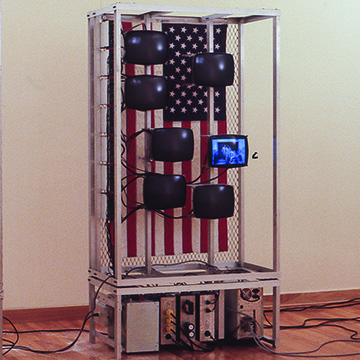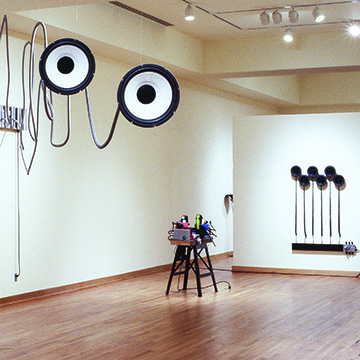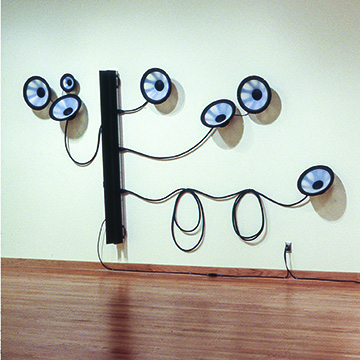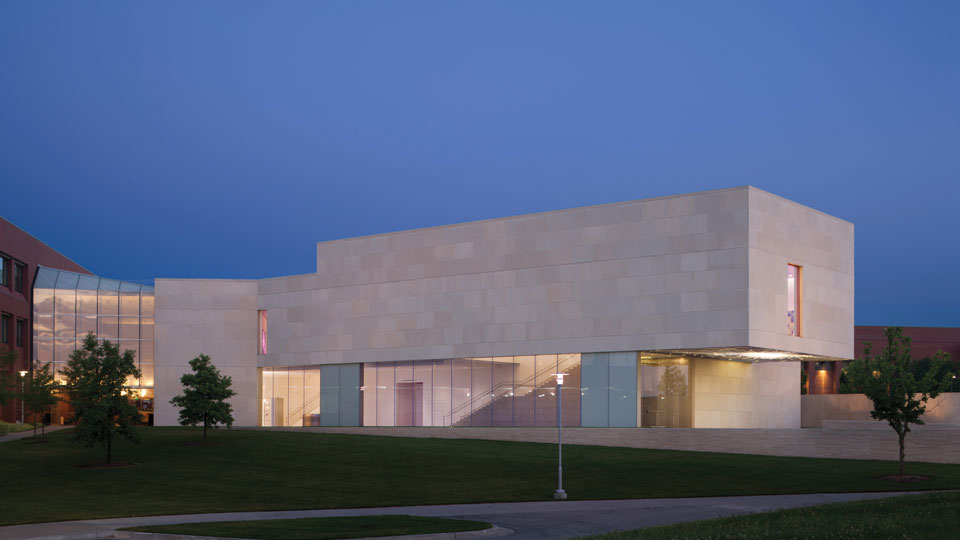Alan Rath
Alan Rath has always been fascinated by computers. He even makes his own parts. However, he has combined his electronic genius with an undeniable artistic talent to create witty and often damning statements about technology gone berserk. Also, in the short span of 10 years he has built an impressive reputation as a sculptor. His computer-controlled works have been exhibited at impressive museums including the Whitney Museum of American Art, NY, and Los Angeles Contemporary Exhibitions. His work has been the subject of one-person shows at the Dorothy Goldeen Gallery in Santa Monica, CA, and the Walker Art Center in Minneapolis, MN.
Thirteen sculptures and a series of drawings showcase Rath’s engineering skills, which he honed at the electrical engineering department of Massachusetts Institute of Technology. Rath often makes the computer chips needed to power his pieces. His work, however, is more concerned with the impact technology has had on society. “I don’t know if it (technology) has any answers,” Rath said in a recent interview, “but I think it developed out of some very basic needs of comfort and it really went berserk from there. At the base of technology is a very primal search for a warm, secure place to sleep.”
Rath became fascinated with electronics at an early age and after graduating from college he worked for a Boston engineering firm for a brief time. Then, he moved to Oakland in 1984 to pursue his artistic interests. Rath quickly learned that nearby Silicon Valley was an abundant source of inexpensive electronics materials. Within several years, he began exhibiting in the Bay Area, where his work gained the attention of prominent critics and curators.
As seen in our exhibition, Rath produces sculptures that combine the visual arts with technology. They incorporate video tubes and audio speakers and images of hands, eyes and noses. Walker Art Center curator Peter Boswell says that Rath’s art has a “dry wit that really attracts people.” Rath starts a sculpture by videotaping a human subject, focusing on a moving hand or a blinking eye. He then digitizes the tape on a handmade piece of computer equipment, animates it, and weds it into a piece of sculpture, a process that has earned him the title of techno-artist. “Rath really does personalize technology. Some of his objects strike me as being like mechanical pets,” Boswell says.
One of the works on display in the JCCC exhibition will be Guitar, Rath’s tribute to Jimi Hendrix, a rock musician, Rath said, who took electronic instruments and came up with something new. “His music carries that feeling of electricity, of power and noise and distortion, feedback and hum,” Rath said. Also included is a powerful piece, Challenger, based on the space shuttle disaster. When asked what was learned by the explosion that killed seven astronauts, Rath replied, “We need to remember that no matter how clever we think we are there are always things that can go wrong.”
The gallery guide features an interview excerpted from conversations that took place between Rath and Mark J. Spencer on Nov. 17 and Nov. 21, 1992.
Alan Rath was born in 1959 in Cincinnati, Ohio. He graduated in 1982 with a BS Electrical Engineering from MIT, Cambridge, Massachusetts. Rath’s sculpture has been featured in numerous group exhibitions, including Self/Evidence at Los Angeles Contemporary Exhibitions (1989), The Pleasure Machine: Recent American Video at the Milwaukee Art Museum (1991) and the 1991 Biennial Exhibition at the Whitney Museum of American Art in New York. Rath has had recent one-person exhibitions at Carl Solway Gallery, Cincinnati, Ohio (1991), Gallery 210 at the University of Missouri-St. Louis (1992), Dorothy Goldeen Gallery, Santa Monica, California (1992), and a traveling exhibition organized by the Walker Art Center, Minneapolis, Minnesota (1991-92).
Dorothy Goldeen and Randy Sommer of the Dorothy Goldeen Gallery were instrumental to the organization of this show, as were the private collectors who so generously loaned works. To them, we are deeply indebted. Finally, we owe considerable thanks to Mark J. Spencer, curator, Yellow Freight System Inc., for organizing the exhibit, and to the Jules and Doris Stein Foundation and Marti and Tony Oppenheimer for their financial assistance.
Rath will conduct a tour of the exhibition at the opening at 3:30 p.m. on Sunday, January 10.





